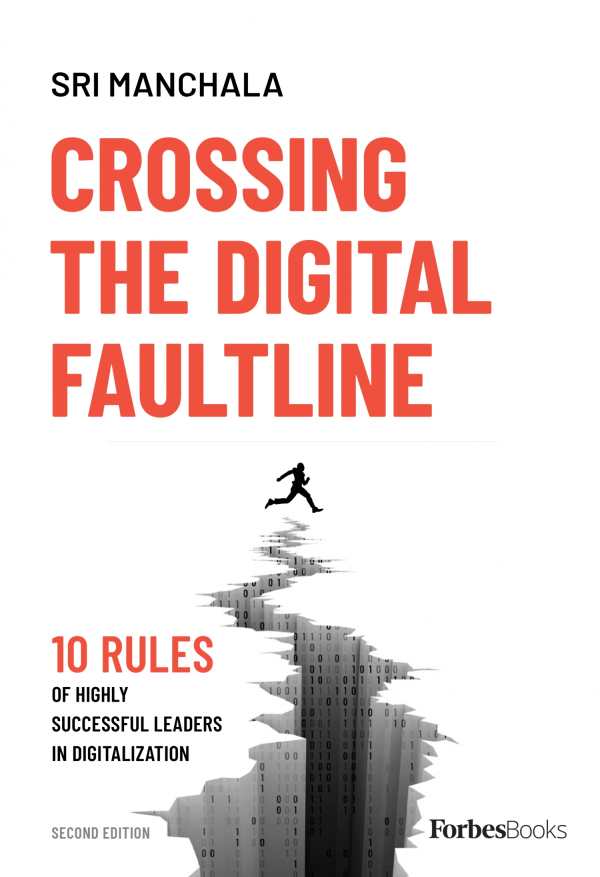Crossing the Digital Faultline: Second Edition
10 Rules of Highly Successful Leaders in Digitalization
This ever-relevant book is well attuned to changing business environments.
Sri Manchala has upgraded his innovative business development work in Crossing the Digital Faultline: Second Edition, which further focuses its leadership advice to deal with the Covid-19 pandemic and the ongoing digital revolution.
The book delivers clear-eyed advice for leading companies through shifts in technology, recognizing that adaptive success requires becoming comfortable with high levels of uncertainty. The text defines “digital transformation” as the shift toward delivering quality service and value to all stakeholders, and argues that companies need “methodical innovator(s)” who are willing to take risks and execute actions, even when much about the future remains unknown.
To help, the book names ten rules for business adaptation, including to “prioritize customer centricity over competitive differentiation.” It bases its arguments on research and data from the Trianz Global Transformation Survey, which looks at how companies are adapting to ongoing digital changes. The survey provides clear grounding for the text, resulting in added authenticity and weight.
But the book also veers from the focus on theory that dominated its first edition, here making more room to focus on the steps themselves. The result is a sharper guide that brings its relevant data to the fore, leaving aside more personal reflections about leadership and streamlining its personal anecdotes, as with that of Manchala’s escape from a 2011 Tokyo earthquake. This edition is also marked by shorter, more focused paragraphs, so that it delivers its most useful details in a obvious manner.
The text explores the digital landscape, beginning with facts such as that the average age of first smart phone ownership is decreasing; these set contemporary changes in a helpful context. It asserts that people’s interactions with physical businesses are shrinking, but only partially because of Covid-19, which heightened a trend that was already underway.
This ever-relevant book remains well attuned to changing business environments. While the book’s first edition dealt with Covid-19 when it was just beginning to change business landscapes, this edition has a clearer grasp on related changes to work and consumption. For example, it asserts that, as Covid-19 made remote work more common, companies had to rethink how they approached their employees, even treating them like customers, to achieve “higher productivity, collaboration, and lower stress levels.” It makes a convincing case that established companies which are unwilling to take new risks and listen to what people want will suffer in rhw long term.
The second edition of Crossing the Digital Faultine is a thoughtful about keeping up with, and suggesting adaptive approaches to, current business trends.
Reviewed by
Jeremiah Rood
Disclosure: This article is not an endorsement, but a review. The publisher of this book provided free copies of the book and paid a small fee to have their book reviewed by a professional reviewer. Foreword Reviews and Clarion Reviews make no guarantee that the publisher will receive a positive review. Foreword Magazine, Inc. is disclosing this in accordance with the Federal Trade Commission’s 16 CFR, Part 255.

